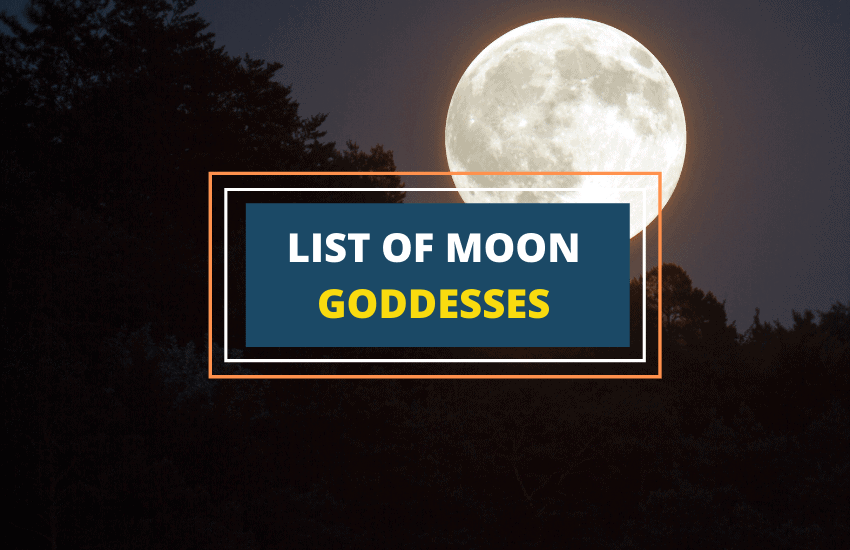
Table of Contents
Since the earliest times, stars and the moon were used for navigating lands and seas. Similarly, the moon’s position in the night sky was used as an indicator for the changing of the seasons and tasks such as determining the optimal periods for seeding and harvesting.
The moon was usually associated with femininity because the lunar month was often linked to the female monthly cycle. In many cultures throughout history, people believed in the power and the feminine energy of the moon, and tapped into it by calling upon lunar deities, the goddesses associated with the moon.
In this article, we’ll take a closer look at the most prominent moon goddesses across different cultures.
Artemis
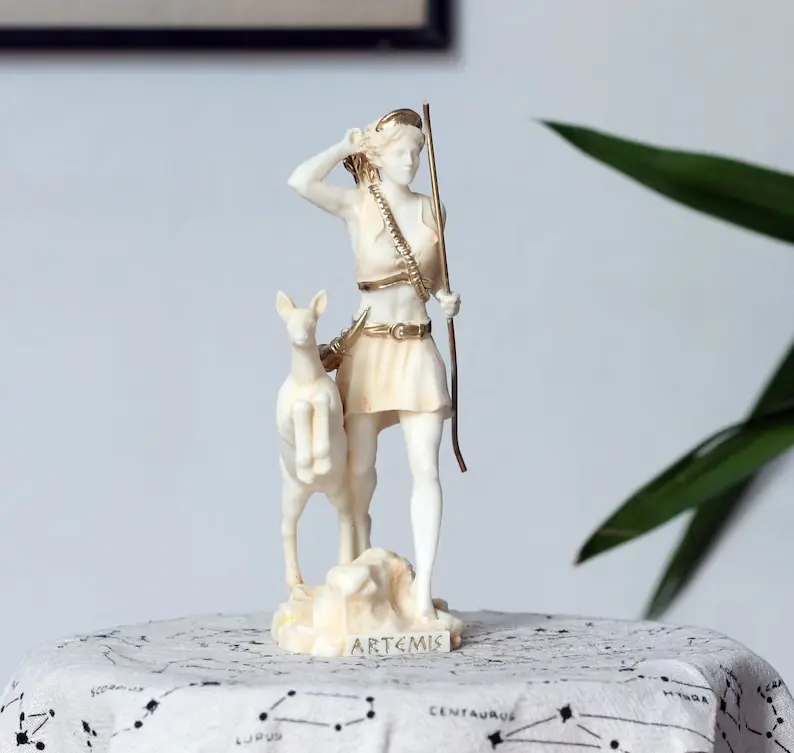
Artemis was one of the most revered and honored of the ancient Greek deities, ruling over hunting, the moon, childbirth, virginity, as well as the wilderness and wild animals. She was also considered the protector of young women until the age of marriage.
Artemis was one of Zeus‘s many children and went by many different names, including the Roman name Diana. Apollo was her twin brother, who was associated with the sun. Gradually, as her brother’s female counterpart, Artemis became associated with the moon.
However, her function and depiction varied from culture to culture. Even though she was considered the moon goddess, she was most commonly depicted as the goddess of wildlife and nature, dancing with nymphs in forests, mountains, and marshes.
Bendis
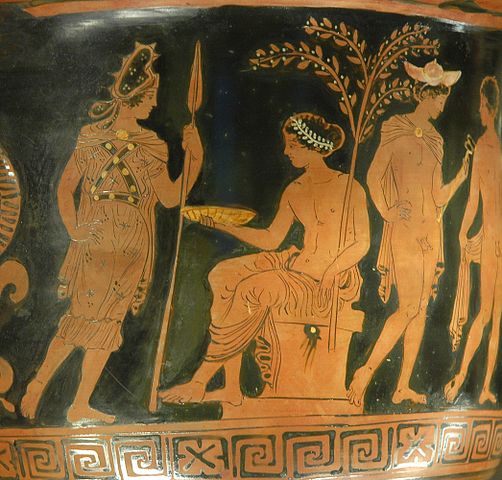
Bendis was the goddess of the moon and hunting in Trachia, the ancient kingdom which spread across parts of present-day Bulgaria, Greece, and Turkey. She was associated with Artemis and Persephone by the ancient Greeks.
The ancient Trachians called her Dilonchos, meaning The Goddess with the Double Spear, for several reasons. The first was that her duties were discharged over two realms – the heaven and the Earth. She was often depicted holding two lances or spears. And lastly, she was believed to possess two lights, one emanating from herself and the other taken from the sun.
Cerridwen
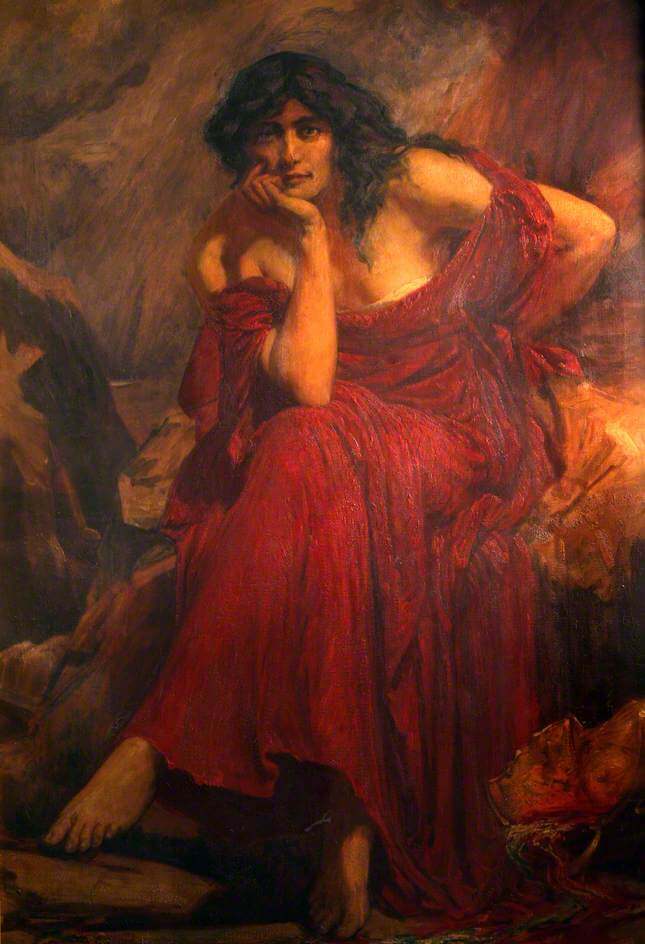
In Welsh folklore and mythology, Cerridwen was the Celtic goddess associated with inspiration, fertility, wisdom. These traits were often linked to the moon and the female intuitive energy.
She was also considered a powerful enchantress and the keeper of the magical cauldron, the source of beauty, wisdom, inspiration, transformation, and rebirth. She’s often portrayed as one aspect of the Celtic Triple Goddess, where Cerridwen is the Crone or the wise one, Blodeuwedd is the Maiden, and Arianhod is the Mother. However, as the majority of Celtic female deities, she embodies all of the three aspects of the Triad within herself.
Chang’e
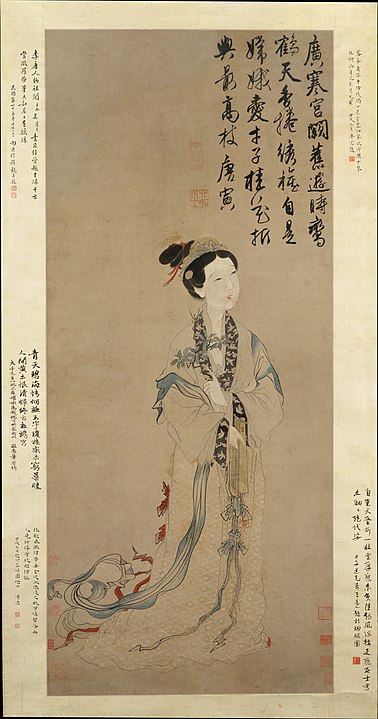
According to Chinese literature and mythology, Chang’e, or Ch’ang O, was the beautiful Chinese goddess of the moon. According to the legend, Chang’e tried to escape from her husband, the Lord Archer Hou Yi, after he found out that she stole the magical potion of immortality from him. She found refuge on the moon, where she lived with a hare.
Every year in August, the Chinese celebrate a Mid-Autumn Festival in her honor. During the full moon of the festival, it’s customary to make moon cakes, eat them, or share them with friends and family. It’s believed that a toad’s silhouette on the moon represents the goddess, and many go outside to marvel at its appearance.
Coyolxauhqui
Coyolxauhqui, meaning Pained with Bells, was the Aztec female deity of the Milky Way and the moon. According to Aztec mythology, the goddess was killed and dismembered by the Aztec god of war, Huitzilopochtli.
Huitzilopochtli was the patron god of Tenochtitlan, and either brother or husband of Coyolxauhqui. In one version of the story, the goddess angered Huitzilopochtli when she refused to follow him to the new settlement, Tenochtitlan. She wanted to remain on the mythical Snake Mountain, called Coatepec, disrupting the god’s plan to settle in the new territory. This gravely upset the god of war, who decapitated her and ate her heart. After this gruesome act, he led his people to their new home.
This story was recorded on the enormous stone monolith found at the Great Temple base in today’s Mexico City, featuring a dismembered and naked female figure.
Diana
Diana is the Roman counterpart of the Greek Artemis. Although there’s a substantial cross-reference between the two deities, the Roman Diana developed into a distinct and separate deity in Italy over time.
Just like Artemis, Diana was originally associated with hunting and wildlife, just to later become the main lunar deity. In the feminist Wiccan tradition, Diana is honored as the moon’s personification and the sacred feminine energy. In some classical artwork, this deity is depicted wearing a crescent moon-shaped crown.
Hekate
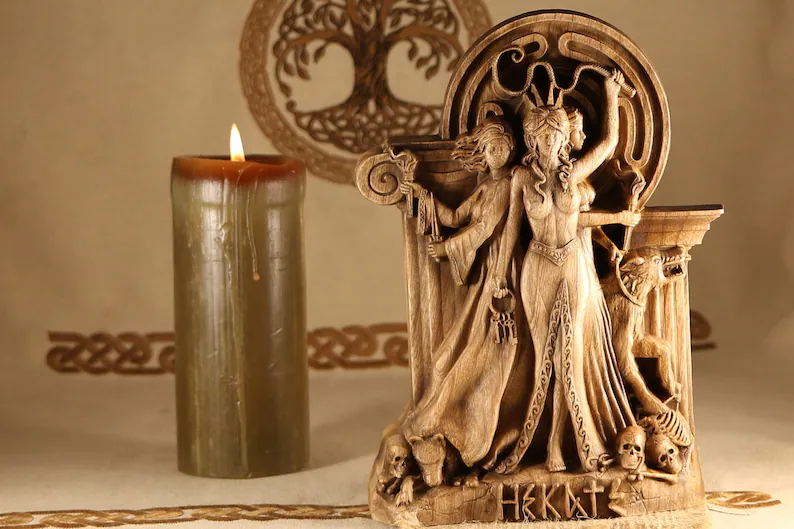
According to Greek mythology, Hekate, or Hecate, is the lunar goddess most commonly associated with the moon, magic, witchcraft, and the night creatures, such as ghosts and hell hounds. It was believed that she had powers over all the realms, the sea, the Earth, and heaven.
Hekate was often depicted holding a burning torch as a reminder of her association with the darkness and night. Some myths say that she used the torch to find Persephone, who was abducted and taken to the Underworld. In later depictions, she was portrayed as having three bodies or faces, positioned back-to-back and facing all directions, to represent her duty as the guardian of doorways and crossroads.
Isis
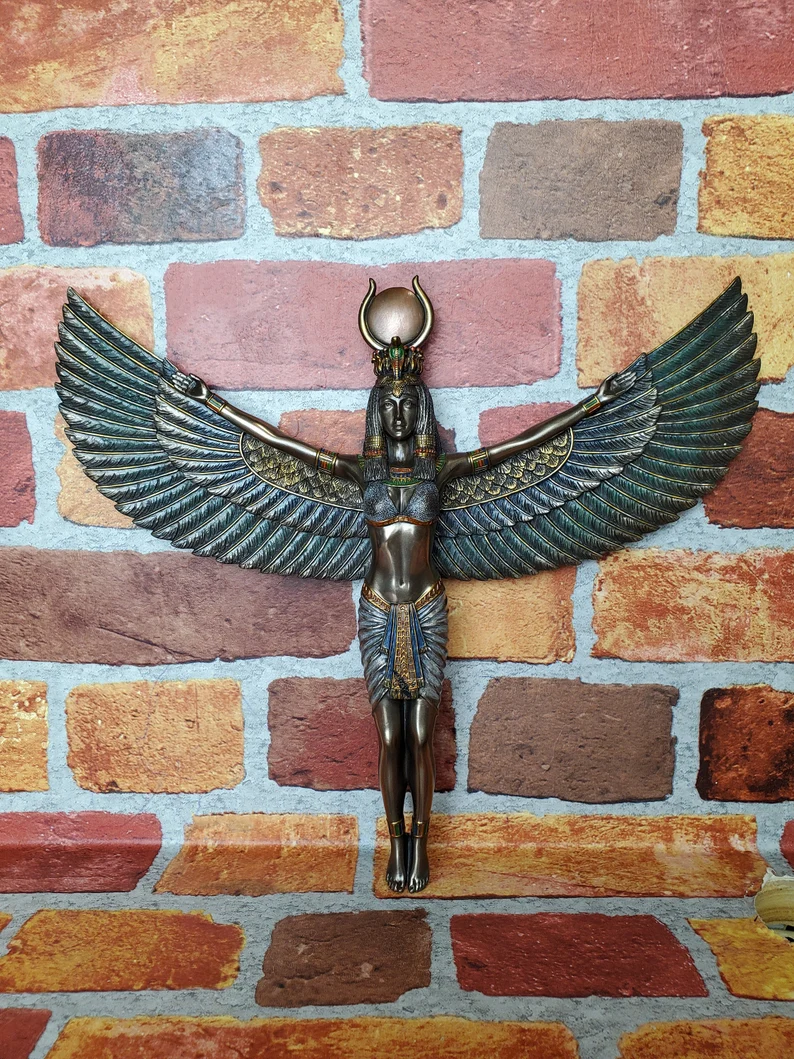
In Egyptian mythology, Isis, meaning the throne, was the moon goddess associated with life, healing, and magic. She was considered the protector of the sick, women, and children. She was the wife and sister of Osiris, and they had a child, Horus.
As one of the most prominent deities of ancient Egypt, Isis assumed the functions of all the other important female deities over time. Some of her most important functions and duties included matrimonial devotion, protection of childhood and womanhood, as well as healing of the sick. She was also believed to be the most potent enchantress, mastering the workings of magical charms and spells.
Isis was the divine embodiment of a perfect mother and wife, often depicted as a beautiful woman wearing cow’s horns with a lunar disk between them.
Luna
In Roman mythology and religion, Luna was the lunar goddess and the divine personification of the moon. It was believed that Luna was the female counterpart of the Sun god Sol. Luna is often represented as a separate deity. Still, sometimes she’s considered to be one aspect of the Triple Goddess in Roman mythology, called diva triformis, together with Hecate and Proserpina.
Luna’s often associated with a variety of lunar attributes, including the Blue Moon, instinct, creativity, femininity, and the element of water. She was considered the patroness and protector of charioteers and travelers.
Mama Quilla
Mama Quilla, also called Mama Killa, can be translated as Mother Moon. She’s the Incan lunar deity. According to Incan mythology, Mama Qulla was the offspring of the Incan supreme creator god, called Viracocha, and their sea goddess, Mama Cocha. The Incas believed that the dark patches on the moon’s surface occurred because of the love between the goddess and a fox. When the fox rose to the heavens to be with his lover, Mama Quilla embraced him so close that it created these dark spots. They also believed that a lunar eclipse was a bad omen, caused by a lion trying to attack and swallow the goddess.
Mama Quilla was considered a protector of women and marriages. The Incas used the moon’s travel across the sky to create their calendar and measure time passage. The goddess had a temple dedicated to her in the city of Cuzco in Peru, which was the capitol of the ancient Incan Empire.
Mawu
According to the Fon people of Abomey, Mawu is the African creator goddess, associated with the moon. The Fon people believed that Mawu was the moon’s embodiment, responsible for cooler temperatures and the night in Africa. She’s most commonly depicted as an old wise woman and mother who lives in the West, representing old age and wisdom.
Mawu is married to her twin brother and the African sun god, called Liza. It’s believed that together they created the Earth, using their son, Gu, as the holy tool and shaping everything out of clay.
The Fon people believe that the moon or the solar eclipse is the time when Liza and Mawu make love. They’re believed to be the parents of fourteen children or seven twin pairs. Mawu is also considered to be the female deity of joy, fertility, and rest.
Rhiannon
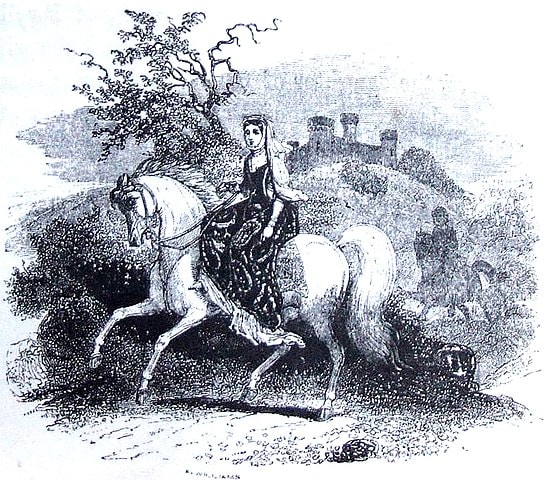
Rhiannon, also known as the Night Queen, is the Celtic goddess of fertility, magic, wisdom, rebirth, beauty, transformation, poetry, and inspiration. She’s most commonly associated with death, the night, and the moon, as well as horses and otherworldly singing birds.
Because of her connection to horses, she’s sometimes associated with the Gaulish horse goddess Epona, and the Irish goddess Macha. In Celtic mythology, she was initially called Rigantona, who was the Celtic Great Queen and Mother. Therefore, Rhiannon is at the center of two different Gaulish cults – celebrating her as the Horse Goddess and the Mother Goddess.
Selene
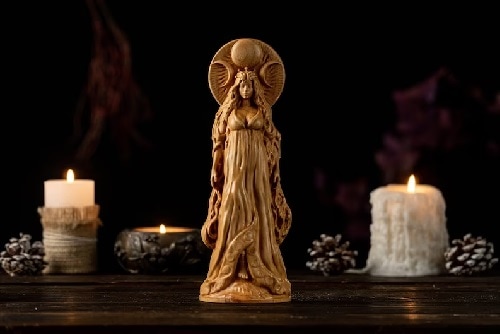
In Greek mythology, Selene was the Titan lunar goddess, representing the moon. She’s the daughter of two other Titan deities, Theia and Hyperion. She has one brother, the sun god Helios, and a sister, the goddess of the dawn Eos. She’s usually depicted sitting in her moon chariot and riding across the night sky and heavens.
Although she’s a distinct deity, she’s sometimes associated with the other two moon goddesses, Artemis and Hecate. However, while Artemis and Hecate were considered moon goddesses, Selene was thought to be the moon’s incarnation. Her Roman counterpart was Luna.
Yolkai Estsan
According to Native American mythology, Yolkai Estsan was the moon deity of the Navajo tribe. It was believed that her sister and the sky goddess, Yolkai, made her out of an abalone shell. Therefore, she was also known as the White Shell Woman.
Yolkai Estsan was typically associated with the moon, the Earth, and the seasons. For Native Americans, she was the ruler and protector of the oceans and of the dawn, as well as the creator of maize and fire. They believed that the goddess created the first men out of white corn and women out of yellow corn.
To Wrap Up
As we can see, the moon goddesses played essential roles in many cultures and mythologies around the world. However, as civilization progressed, these deities have slowly lost their importance. The organized Western religions proclaimed the belief in the moon deities as pagan, heretical, and heathen.
Soon after, the worshiping of the lunar deities was dismissed by others as well, arguing that it was primitive superstition, fantasy, myth, and fiction. Nevertheless, some modern pagan movements and Wicca still look upon the moon deities as vital elements in their belief system.








